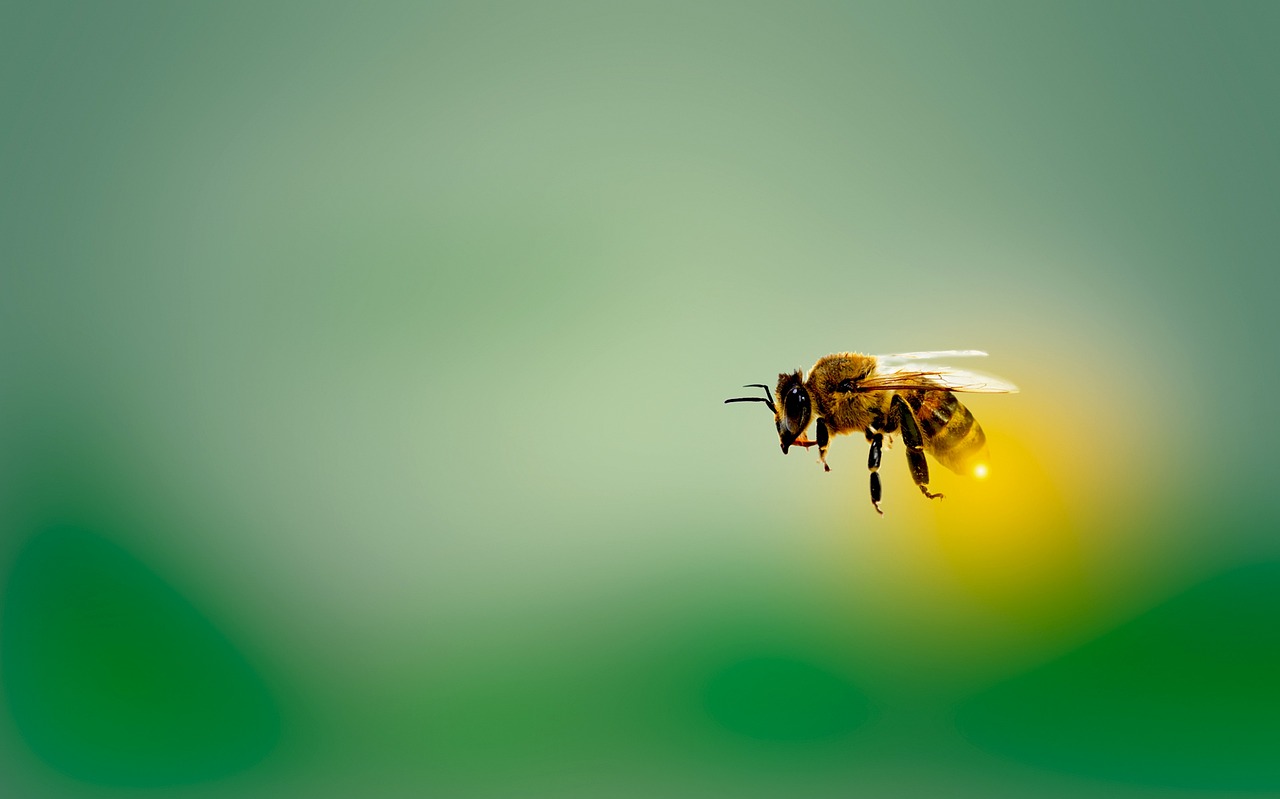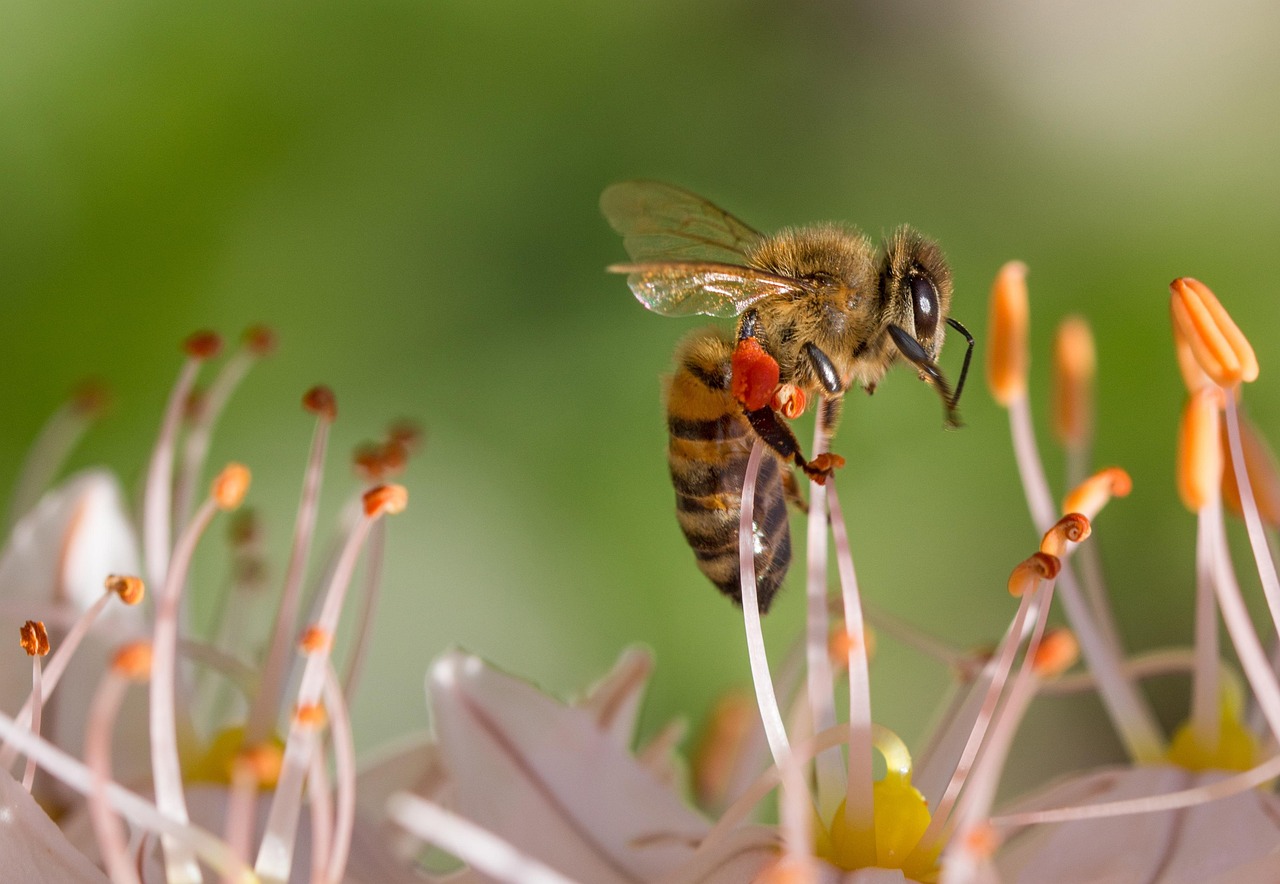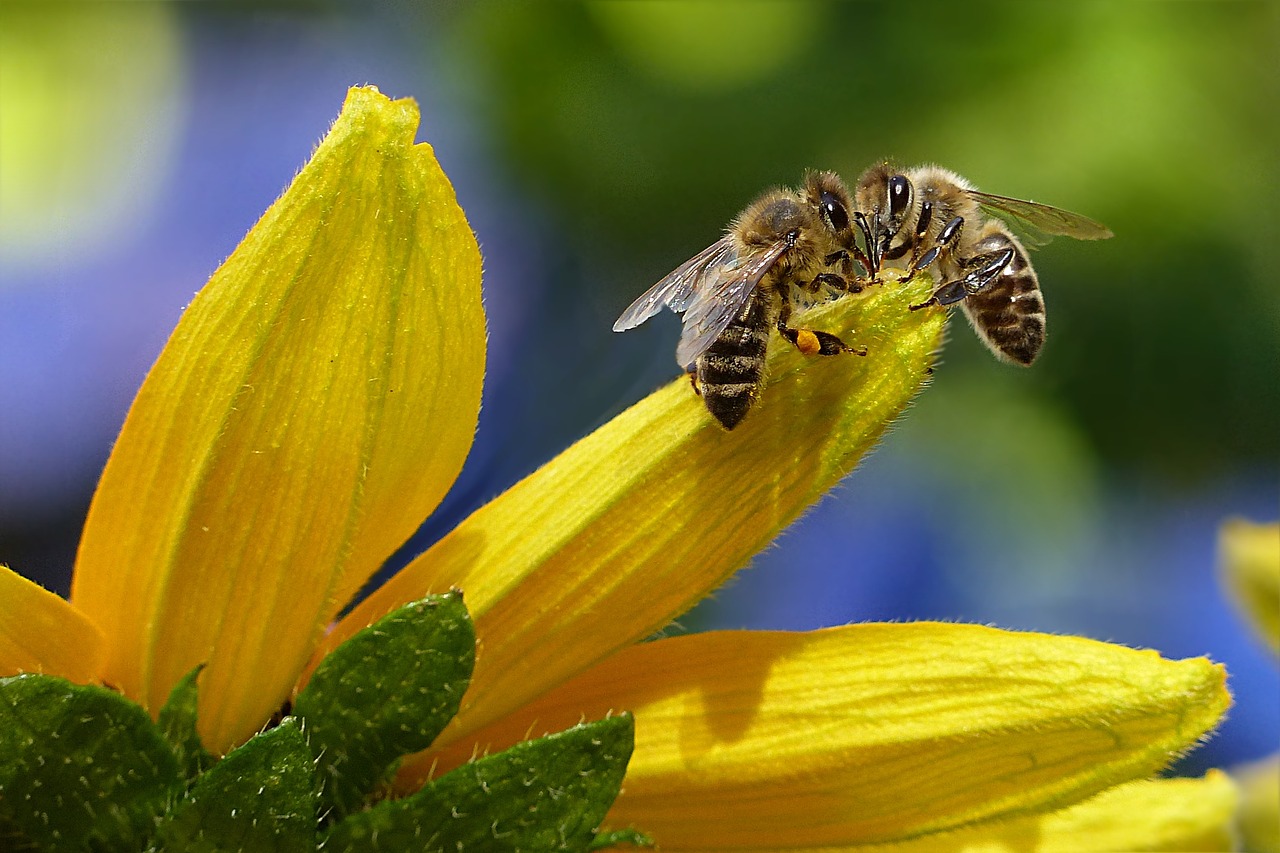Identifying garden bee types is essential for understanding the biodiversity within your ecosystem. Various species contribute to pollination, each with unique characteristics and behaviors. Familiarizing yourself with these bees can enhance your gardening efforts and support local wildlife.
Understanding Bees in Your Garden Ecosystem

Bees play a crucial role in maintaining the health of ecosystems. They are primary pollinators, helping plants reproduce by transferring pollen from one flower to another. This process not only supports the growth of fruits and vegetables but also sustains the entire food chain. Understanding the different types of bees that inhabit your garden can significantly enhance your appreciation of these vital pollinators.
There are over 20,000 species of bees worldwide, with many residing in gardens. Each species has its unique traits, such as size, color, and nesting habits. Some bees are solitary, while others are social and live in colonies. Identifying these species can help you understand which bees are present in your garden and what plants they prefer.
Common Types of Bees Found in Gardens
When examining the types of bees in your garden, it is helpful to categorize them into a few primary groups. The most common types include:
- Honey Bees: Social bees known for their production of honey and wax.
- Bumble Bees: Larger, fuzzy bees that are excellent pollinators and often nest in the ground.
- Solitary Bees: Includes various species that do not form colonies, such as mason bees and leafcutter bees.
- Carpenter Bees: Large, robust bees that create nesting holes in wood.
- Mining Bees: Ground-nesting bees that are typically solitary and emerge early in spring.
Key Characteristics to Identify Garden Bees
Identifying bees can be straightforward if you know what to look for. Here are some key characteristics to consider:
| Bee Type | Color | Size | Nesting Habits |
|---|---|---|---|
| Honey Bee | Golden Brown | Small | Colonies in hives |
| Bumble Bee | Black with Yellow Stripes | Medium | Ground nests |
| Solitary Bee | Various Colors | Small to Medium | Nests in hollow stems or soil |
| Carpenter Bee | Black and Yellow | Large | Hollow wood |
| Mining Bee | Brown or Gray | Small | Ground nests |
Recognizing these features will aid in identifying which species visit your garden. Each bee type has specific preferences for flowers and plants. For instance, honey bees are attracted to a wide range of flowering plants, while bumble bees prefer native wildflowers.
In addition to visual identification, understanding their behavior can be equally important. Observing how they interact with flowers can provide insight into their pollination patterns and preferences. Taking the time to learn about these fascinating creatures enriches your gardening experience and contributes to the preservation of biodiversity.
Bee Habitats and Nesting Preferences
Understanding the habitats and nesting preferences of various bee species is essential for recognizing their roles in the ecosystem. Different bees have unique requirements when it comes to where they build their nests. By creating an environment that caters to these needs, gardeners can encourage more bee activity and enhance pollination.
Types of Nesting Habitats
Bees utilize a variety of nesting habitats based on their species. Here are the primary types of nesting preferences:
- Ground Nests: Many solitary bees, such as mining bees, prefer to create their nests underground. They burrow into the soil, forming small tunnels and chambers.
- Cavity Nests: Carpenter bees are known for nesting in pre-existing holes in wood or creating new ones. They prefer untreated wood that is soft and easy to excavate.
- Stem Nests: Some solitary bees, like mason bees, build nests in hollow plant stems or reeds. They utilize these cavities to lay their eggs.
- Above Ground Nests: Bumble bees often build their nests in abandoned rodent burrows or under thick grass. They prefer sheltered locations that provide protection from the elements.
Creating Bee-Friendly Habitats
Encouraging bees in your garden can be easily achieved by providing suitable habitats. Here are some tips to create a bee-friendly environment:
- Preserve Natural Areas: Leave patches of wildflowers and native plants undisturbed. This provides natural nesting sites for ground-nesting bees.
- Plant Native Flora: Incorporate a variety of native plants that bloom at different times throughout the growing season. This ensures a steady food supply for bees.
- Provide Nesting Materials: For cavity-nesting bees, consider placing bee hotels or blocks with drilled holes to attract them.
- Avoid Pesticides: Limit or eliminate pesticide use in your garden. Chemicals can harm bees and reduce their populations.
- Create Bare Soil Areas: Leave small patches of bare soil for ground-nesting bees. They need access to soil to burrow and create nests.
The Role of Bees in Pollination
The primary reason for nurturing bee populations in gardens is their pivotal role in pollination. Pollination is the process by which pollen is transferred from the male parts of flowers to the female parts, resulting in fertilization and seed development. Bees are particularly efficient pollinators due to their physical adaptations and behaviors.
How Bees Pollinate
Bees collect nectar and pollen as food sources. While they forage, they inadvertently pick up pollen on their bodies and transfer it between flowers. Here are some key aspects of how this process works:
- Pollen Collection: Bees have specialized structures called pollen baskets on their hind legs that enable them to carry large amounts of pollen back to their nests.
- Flower Preferences: Different bee species are attracted to specific flowers based on color, shape, and scent. This helps ensure successful cross-pollination.
- Behavioral Patterns: Bees tend to visit flowers in a systematic manner, often returning to the same flower type, which enhances pollination efficiency.
Benefits of Pollination
The benefits of bee pollination extend beyond just flower reproduction. Here are some significant advantages:
- Increased Crop Yields: Many fruits, vegetables, and nuts depend on bee pollination for optimal yield. Crops such as almonds, apples, and blueberries rely heavily on bees.
- Biodiversity Support: Pollination contributes to the growth of diverse plant species, which provides habitats for other wildlife and maintains ecosystem balance.
- Economic Impact: The agricultural industry significantly benefits from pollinators. The economic value of crops produced with bee assistance is substantial globally.
Understanding the essential role that bees play in pollination highlights the importance of protecting these insects and their habitats within our gardens and ecosystems.

Threats to Bee Populations

The health of bee populations is crucial for maintaining ecological balance and agricultural productivity. However, various threats have emerged that endanger these essential pollinators. Understanding these challenges can help in devising strategies to protect them in our ecosystems.
Primary Threats to Bees
Several factors contribute to the decline in bee populations. Here are the main threats:
- Pesticides: The use of chemical pesticides in agriculture can have harmful effects on bees. Certain chemicals, particularly neonicotinoids, can impair their ability to forage and navigate.
- Habitat Loss: Urbanization, agricultural expansion, and deforestation have resulted in the loss of natural habitats. This reduces the availability of food sources and nesting sites for bees.
- Climate Change: Changes in climate can disrupt flowering times of plants, affecting the availability of food for bees. Extreme weather conditions can also pose direct threats to bee survival.
- Diseases and Parasites: Bees are susceptible to various diseases and parasites, such as Varroa mites, which can decimate hives and weaken bee populations.
- Monoculture Farming: Farming practices that focus on a single crop limit the diversity of available food sources for bees, making it challenging for them to thrive.
The Impact of Declining Bee Populations
The decline in bee populations has far-reaching consequences. Some impacts include:
- Reduced Crop Yields: Many crops that rely on bee pollination may see decreased yields, leading to food shortages and increased prices.
- Loss of Biodiversity: As pollination services decline, the growth of various plant species may also diminish. This can lead to a cascading effect on other wildlife that depends on these plants for food and habitat.
- Ecosystem Disruption: The balance of ecosystems can be disrupted when key species like bees decline, affecting not only plants but also the animals that rely on them.
Promoting Bee Conservation
Addressing the threats to bee populations requires concerted efforts from individuals, communities, and policymakers. Here are several strategies to promote bee conservation:
Creating Bee Habitats
Encouraging local biodiversity through habitat creation is vital. Here are some ways to create bee-friendly spaces:
- Diverse Planting: Plant a variety of flowering plants that bloom at different times throughout the year. Include native species that are well-adapted to local conditions.
- Provide Water Sources: Include shallow water sources with stones or pebbles for bees to land on. This helps them stay hydrated.
- Nesting Sites: Install bee hotels or leave areas of bare soil for ground-nesting bees. These features can significantly enhance nesting opportunities.
- Community Initiatives: Participate in or organize community gardening projects focused on creating pollinator gardens to raise awareness and encourage collective action.
Supporting Sustainable Practices
Adopting sustainable gardening and farming practices can help mitigate the threats bees face. Here are some recommendations:
- Avoid Chemical Pesticides: Opt for organic gardening practices that minimize the use of harmful chemicals. Use natural pest control methods whenever possible.
- Encourage Biodiversity: Grow a mix of plants that provide food and habitat for various species, not just bees. This promotes overall ecosystem health.
- Educate Others: Share information about the importance of bees and how people can help protect them. Engaging with local schools or organizations can spread awareness.
By implementing these strategies, individuals and communities can play a vital role in conserving bee populations and supporting their essential functions within ecosystems. Understanding their needs and challenges is the first step towards creating a more sustainable environment for these invaluable pollinators.
Enhancing Your Garden for Bees

In addition to creating a welcoming habitat and adopting sustainable practices, there are specific enhancements you can make to your garden that will significantly benefit bee populations. These improvements not only attract more bees but also create a thriving ecosystem.
Planting for Pollinators
Choosing the right plants can dramatically increase the number of bees in your garden. Here are some effective planting strategies:
- Native Plants: Prioritize native plants that are well-suited to your local climate and soil. Native species often have co-evolved relationships with local bee populations, providing them with the best resources.
- Seasonal Blooming: Select flowers that bloom at different times throughout the year. This ensures a continuous food supply for bees during their active months.
- Single-Petal Flowers: Bees generally prefer single-petal flowers over double-petal varieties. Single petals are easier for them to access for nectar and pollen.
- Color Variety: Use a variety of colors in your flower selection. Bees are attracted to bright colors, particularly blue and yellow, which helps draw them to your garden.
Creating Shelter and Protection
Providing shelter is crucial for bees, especially during unfavorable weather conditions. Here are ways to enhance shelter in your garden:
- Leave Natural Debris: Allow some fallen branches, leaves, and other natural debris to accumulate in your garden. This can serve as a refuge for ground-nesting bees.
- Install Bee Houses: Construct or purchase bee houses designed for solitary bees. These structures can provide safe nesting sites and encourage their populations.
- Use Mulch Wisely: While mulch can help retain moisture, avoid overly compacted or synthetic mulches that can inhibit ground-nesting bees. Instead, consider leaving patches of bare soil.
The Importance of Community Involvement
Bee conservation is not solely an individual effort; community involvement plays a significant role. Collaborative initiatives can lead to more significant impacts and help spread awareness. Here are some community-focused actions:
- Community Gardens: Participate in or establish community gardens that focus on planting bee-friendly flowers and crops. Engage neighbors in the importance of supporting pollinators.
- Local Workshops: Organize workshops or educational sessions about bee conservation. Such events can inform community members about the vital role bees play in ecosystems.
- Pollinator Pathways: Advocate for the creation of pollinator pathways in local parks and public spaces. These pathways connect habitats and allow bees to thrive across larger areas.
Final Thoughts
The importance of bees in our gardens and ecosystems cannot be overstated. As key pollinators, they support biodiversity, enhance food production, and contribute to the overall health of the environment. Understanding different bee types, their nesting habits, and the challenges they face allows us to take informed actions that benefit both the bees and our gardens.
By implementing strategies to create bee-friendly environments, reducing pesticide usage, and supporting local initiatives, we can foster healthier ecosystems. Every small action counts towards preserving these vital creatures and ensuring they continue to thrive for future generations.
The relationship between humans and bees is one of mutual benefit. As we cultivate our gardens, let us remember to honor and protect these remarkable pollinators. By doing so, we contribute not only to our own enjoyment of nature but also to the broader health of our planet.
